If success is to be measured according to the number of aerial victories, top ten of the most successful fighter pilots in history all served under the Third Reich. These unbelievable flying aces, nevertheless, failed to prevent their country from losing the war.Here’s a quick recap of their extraordinary achievements.
1. Erich Hartmann
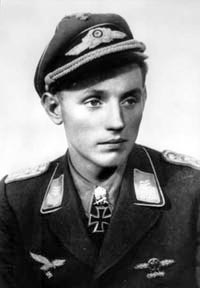
The most successful fighter pilot in history was born in 1922 in Weissach, Germany. After spending his early childhood in China, with the outbreak of the Chinese Civil War in 1928 his family moved back to Germany. Erich’s mother, Elisabeth Wilhelmine Machtholf, was among the first female glider pilots in Germany. Already at 14, he became a flying instructor in her gliding school.
Hartmann began his military training in October 1940 at the 10th Flying Regiment in Neukuhren. Two years later, he proceeded to advanced flight training where he learned combat techniques and gunnery skills. In October 1942, Hartmann was assigned to fighter wing Jagdgeschwader 52 (JG 52), on the Eastern Front in the Soviet Union.
Hartmann flew his first combat mission on 14 October 1942 as a wingman. When they encountered 10 enemy aircraft below, Hartmann, eager to score his first success, opened full throttle and became separated from his squadron leader. He engaged an enemy fighter but failed to score any hits and nearly collided with it instead. His mission subsequently ended with a crash landing after his aircraft ran out of fuel. After violating almost every rule of air-to-air combat, he was sentenced to three days of working with the ground crew.
Under the guidance of some of the most experienced fighter pilots, young and impatient Hartmann steadily developed his tactics. In November 1942, he claimed his first kill, but by the end of the year, he had added only one more to his tally. By September next year, this number rose to 100. The Soviets nicknamed him ‘The Black Devil’ and stayed away from engaging with him. On 17 August 1944, Hartmann became the top scoring fighter ace, surpassing fellow JG 52 pilot Gerhard Barkhorn, with his 274th victory.
Hartmann scored his 352nd and last aerial victory on 8 May 1945, hours before the war ended. Along with the remainder of JG 52, he surrendered to United States Army forces and was turned over to the Red Army. In an attempt to pressure him into service with the Soviet-friendly East German Volksarmee, he was tried on fabricated charges of war crimes and convicted. Hartmann was sentenced to 25 years of hard labour and spent 10 years in Soviet prison camps and gulags until he was released in 1955.
In total, he flew 1,404 combat missions and participated in aerial combat on 825 separate occasions. He was credited with shooting down 352 Allied aircraft while serving with the Luftwaffe. During the course of his career, Hartmann was forced to crash-land his fighter 14 times due to damage received from parts of enemy aircraft he had just shot down or mechanical failure. In 1944 Hitler awarded him the highest military honor of all – Knight’s Cross of the Iron Cross with Oak Leaves, Swords, and Diamonds. Hartmann was never shot down or forced to land due to enemy fire.
2. Gerhard Barkhorn
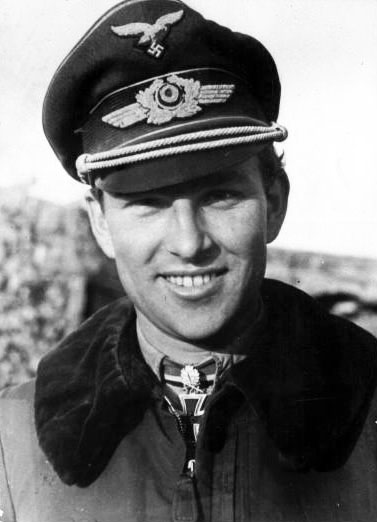
Gerhard Barkhorn was born on 20 March 1919 in Königsberg (today Kaliningrad) in the Free State of Prussia of the Weimar Republic. In November 1937, he joined the military service in Luftwaffe as a Cadet. He started his flight training in March 1938. After the outbreak of the war, in September 1939, he was selected for specialized fighter pilot training.
Barkhorn flew his first combat missions in May 1940, during the Battle of France and then the Battle of Britain without scoring an aerial victory. His first victory came in July 1941 and his total rose steadily against the Soviets.
On 2 March 1944, he was awarded the Swords to his Knight’s Cross, the third highest decoration in the Wehrmacht. On 31 May, on 273 victories, he was shot down by Soviet P-39 Airacobras. Flying his sixth mission of that day he intercepted some Soviet bombers but failed to notice the escorting fighters. His Bf 109G-6 was severely damaged and despite severe wounds to his right shoulder and leg he managed to crash-land behind his own lines but was hospitalized for four months.
Eventually returning to his unit the psychological damage and combat stress on Barkhorn became apparent. Sitting in his cockpit he became overcome with anxiety, and even when flying with friendly aircraft behind him he felt intense fear. It took several weeks for him to overcome this condition. Returning to combat in October he added another 27 kills, scoring his 301st (and final) victory on 5 January 1945. Less than two weeks later he left JG 52 on the Eastern Front and joined Jagdgeschwader 3 (JG 3), defending Germany from Western Allied air attack.
Barkhorn flew 1,104 combat sorties and was credited with 301 victories on the Eastern Front against the Soviet Red Air Force piloting the Messerschmitt Bf 109 and Focke-Wulf Fw 190D-9. He flew with the famed Jagdgeschwader 52 (JG 52 – Fighter Wing 52), and Jagdgeschwader 2 (JG 2).
3. Günther Rall
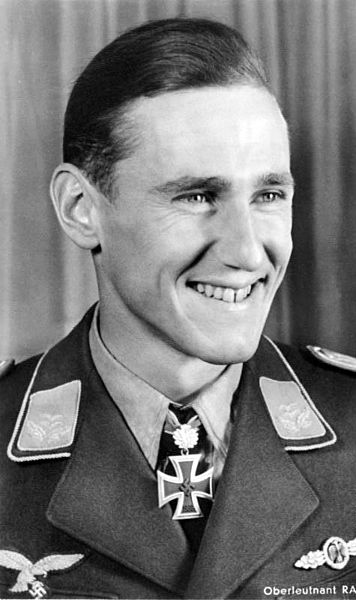
Son of a businessman, Günther Rall was born in 1918 in Gaggenau, a small town in the Schwarzwald region. Under the influence of his friend, he joined the Luftwaffe and qualified as a pilot on 1 July 1938. Rall was posted to Jagdgeschwader 52 (JG 52 – 52nd Fighter Wing), with the rank of second lieutenant.
Rall first saw combat during the Battle of France, and on 12 May 1940, he scored his first victory. Later JG 52 was moved to Calais where it took part in the Battle of Britain. He fought with JG 52 over Britain until the unit was withdrawn to replace losses. Rall then took part in the Balkans Campaign in the spring of 1941. He also partook in the airborne invasion and subsequent Battle of Crete in June 1941.
During Operation Barbarossa, Rall scored his third, fourth and fifth victories in three days of June 1941. On 28 November 1941 Rall scored his 37th victory but was himself shot down. He tried to fly to the German lines with a damaged engine, but he crash-landed and was knocked out. A German tank crew rescued him from the wreck. With his back broken in three places, doctors told Rall he was finished as a pilot. Despite the diagnosis, which said he would not be able to walk again, Rall defied the odds and returned to combat a year later.
From August to November 1942 Rall claimed another 38 victories, bringing his total to 101. On 3 September 1942, Rall was awarded the Knight’s Cross of the Iron Cross. On 22 October 1942, Rall was credited with his 100th aerial victory, and on 26 November 1942 he was given the Oak Leaves to his Knight’s Cross of the Iron Cross by Adolf Hitler personally.
In 621 combat missions, Günther Rall achieved a total of 275 victories: 272 on the Eastern Front, of which 241 against Soviet fighters. He was shot down eight times and wounded three times. He claimed all of his victories in the Messerschmitt Bf 109.
4. Otto Kittel
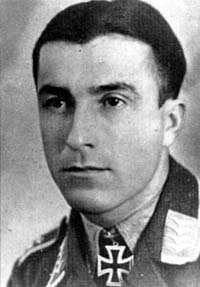
Otto Kittel was born on 21 February 1917 in Kronsdorf, Austria-Hungary. Fascinated with flight at an early age, Kittel joined the Luftwaffe in 1939 at the age of 22. After completing his training in 1941, Kittel was posted to JG 54. During his training, he was described as a good comrade on account of his calm demeanour, presence of mind and sense of duty. Owing to these attributes, his superior officers treated him with respect.
Kittel’s first operations were air superiority missions during the Balkans Campaign. Assigned to support the German invasion of Yugoslavia and the bombing of Belgrade, Kittel’s Wing was credited with 376 aerial victories by the time of the Yugoslavian surrender on 17 April 1941. During the course of the campaign, Kittel acted as wingman for his squadron leader. His only combat actions were during strafing missions against Yugoslav Army forces. In May 1941, Kittel began intensive training on the new Bf 109F fighter plane.
By winter 1941–1942, during Operation Barbarossa, he had 11 victories and was awarded the Iron Cross First Class. On 19 February 1943, Kittel achieved his 39th victory, which was also JG 54’s 4,000th of the war. JG 54 Wing Commander decreed that he was no longer to be assigned the role of wingman, but would instead be allowed to conduct lone combat patrols. Kittel’s unit then converted to a more powerful fighter plane, the Fw 190. The Fw 190 was an ideal interceptor against the tough and heavily armoured Shturmovik, Kittel’s favourite target. Subsequently, Kittel’s victory tally climbed rapidly and by mid-March 1943, he had reached 46 victories.
On 14 September 1943, Kittel claimed his 100th aerial victory which earned him the Knight’s Cross of the Iron Cross. He was promoted to the rank of second lieutenant in November and until January 1944 served as the chief instructor to trainee fighter pilots. Unhappy in a teaching role, Kittel filed several applications to return to combat, and in March 1944 his request was approved. Upon returning to JG 54 on the Eastern Front, in early April he achieved his 150th aerial victory. On April 14, he was awarded the Knight’s Cross of the Iron Cross with Oak Leaves by Adolf Hitler.
By the 27 October 1944, Kittel had achieved 254 victories, a total of 102 in just six months. In November, Hitler added Swords to Kittel’s Iron Cross. On 14 or 16 February 1945, Kittel engaged several Soviet planes above Latvia. Kittel damaged one aircraft and chased it. As he closed in for the kill, his Focke-Wulf was hit by return fire from a rear gunner and descended towards the ground on fire. Witnesses from Kittel’s formation reported that a Shturmovik had been shot down by Kittel before he himself was killed during the air battle having scored his 267th and final victory.
5. Walter Nowotny
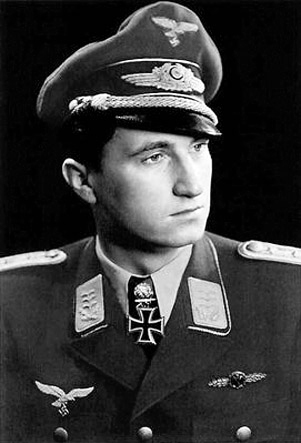
Walter Nowotny was born in Gmünd, a small Austrian town. In his teens, Nowotny was interested in all kinds of sports. In 1935, he played football for the school team, and in 1937, took first place in the javelin throw and third place in the lower Austrian 1,000 metres track and field championships. For his then mandatory Labour Service, he joined the Luftwaffe on 1 October 1939.
He completed his pilot training and received the Pilot Badge on 19 August 1940. In December, Nowotny was posted to the Training Squadron of Jagdgeschwader 54 (JG 54). From 25 March 1941 to 10 March 1942, Nowotny flew with the Stabsstaffel of the Ergänzungs-Jagdgruppe JG 54 where he was promoted to the second lieutenant. Nowotny flew a Messerschmitt Bf 109 E-7 ‘White 2’ on his 24th operational mission on 19 July 1941 and claimed his first two kills, but was subsequently shot down. He managed to survive and spent three days in the Gulf of Riga.
On 20 July 1942, Nowotny shot down five aircraft on a single day, and seven on 2 August. After having downed three enemy aircraft on 11 August, Nowotny carried out three victory passes over the airfield, despite having sustained combat damage to his own Bf 109. In the subsequent landing, his aircraft somersaulted and he sustained moderate injuries. Walter Nowotny was awarded the Knight’s Cross of the Iron Cross, after 56 aerial victories.
In January 1943, JG 54 started converting to the agile Focke-Wulf 190 fighter. With the new aircraft, Nowotny scored at an unprecedented kill rate, often averaging more than two planes a day for weeks on end. As of 1 February 1943, Nowotny, Karl Schnörrer, – Nowotny’s wingman since late 1942 – Anton Döbele and Rudolf Rademacher, formed a team known as the ‘chain of devils’ or the Nowotny Schwarm, which during the course of the war was credited with 524 combined kills, making them the most successful team in the Luftwaffe.
In August alone, Nowotny shot down 49 aircraft – a number matched exactly by JG 52’s Erich Hartmann – bringing Nowotny’s total to 161 victories. On 1 September, he scored ten victories in two sorties, which took his tally to 183, and seventy-two hours later, that number had risen to 189, earning him the Knight’s Cross of the Iron Cross with Oak Leaves. On 17 September he brought his score to 218 victories, earning him Knight’s Cross of the Iron Cross with Oak Leaves and Swords and the planned ‘Oakleaves’ presentation thus became a Swords ceremony.
On 14 October 1943, he became the first pilot to reach 250 victories. Nowotny was celebrating this feat in a bar when he received a phone call from Hitler himself, announcing that he was adding Diamonds to his Iron Cross. Nowotny claimed his final two aerial victories on the Eastern Front on 15 November 1943. After a propaganda tour in Germany, Nowotny was made commander of a specialist unit dubbed Kommando Nowotny, flying the newly developed Messerschmitt Me 262. On 7 October, he downed a B-24 Liberator bomber, his first aerial victory on the Western Front.
On 8 November 1944, news reached the command post of a large bomber formation approaching. After some problems with his fighter’s turbines, Nowotny took off and engaged the enemy on his own. The events that followed remain unclear, but Nowotny soon reported a failed and burning engine. Minutes later, he crashed. Whether his death was due to an engine failure or US Army Air Forces engagement remains a mystery. Throughout his combat career, Nowotny always wore the lucky trousers he had worn during his Gulf of Riga days – with one exception, his last sortie. He is credited with 258 aerial victories in 442 combat missions.
6. Wilhelm Batz
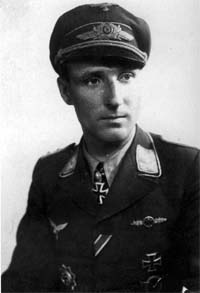
Wilhelm Batz was born on 21 May 1916 in Bamberg, at the time in the Kingdom of Bavaria. In 1935, after graduating, he volunteered military service in the Luftwaffe. He trained as a fighter pilot, and two years later became an instructor. When the war broke out, he repeatedly applied for combat service, to no avail. In 1943, he was finally transferred to JG 52.
On 11 March, Batz claimed his first victory, and by September, he had claimed 20 victories. In March the following year, he claimed his 75th aerial victory for which he received the Knight’s Cross of the Iron Cross, followed by his 100th victory two days later. In July 1944, Oak Leaves were added to his Iron Cross, following his 188th victory.
The sixth-most successful fighter pilot in the history of aerial warfare, Willi Batz flew 445 combat missions and claimed 237 enemy aircraft shot down. 234 of these victories were achieved over the Eastern Front, including at least 46 Il-2 Sturmoviks, but he did claim three victories, including one four-engine bomber against the United States Army Air Forces (USAAF) over the Ploieşti oil fields. He was wounded three times and was shot down four times.
7. Erich Rudorffer
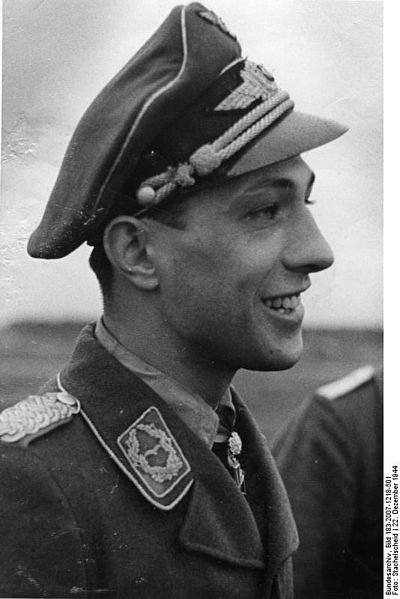
Rudorffer was born on 1 November 1917 in Zwochau, at the time in the Kingdom of Saxony of the German Empire. He joined the military service of the Luftwaffe in April 1936. Two years later, he was trained as a bomber pilot and then as a heavy fighter pilot.
Rudorffer claimed his first kill on 14 May 1940. He scored eight more times before the capitulation of France. He flew throughout the Battle of Britain, and it is claimed he was pursued down Croydon High Street below rooftop level by a Hurricane. He achieved his nineteenth victory on 1 May 1941 and was subsequently awarded the Knight’s Cross of the Iron Cross. By the end of December 1941, he had claimed 40 kills.
In July 1943 Rudorffer was appointed to command JG 54 on the Eastern Front. Due to the experience gained in combat with the RAF, he achieved considerable success. During his first sortie on 24 August, five Soviet aircraft were downed in four minutes. Rudorffer earned his nickname ‘Fighter of Libau’ on 28 October 1944 near the Latvian city of Libau. While preparing to land, he spotted a Soviet task force of about 60 close air support aircraft on its way to attack Libau airfields. He broke off the landing and engaged the enemy without any backup. He drove off the attackers, shooting down nine enemy aircraft within 10 minutes.
Rudorffer fought in all the major German theaters of war, including the European and Mediterranean Theater of Operations and the Eastern Front. During the war he flew more than 1000 combat missions, engaging in aerial combat over 300 times. Rudorffer was shot down by flak and enemy fighters 16 times and had to take to his parachute nine times. He distinguished himself by shooting down 13 enemy planes in 17 minutes. His 222 aerial victories included 58 heavily armoured Il-2 Sturmovik ground attack aircraft.
8. Heinrich Bär
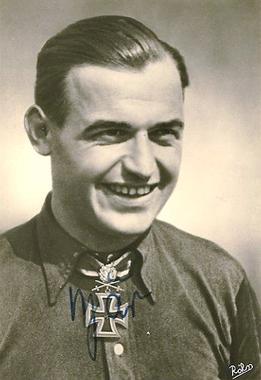
Oskar-Heinz (Heinrich) ‘Pritzl’ Bär was born on 25 May 1913 in Sommerfeld near Leipzig in the Kingdom of Saxony. Bär joined the Reichswehr in 1934 and transferred to the Luftwaffe in 1935. Serving first as a mechanic, then as a pilot on transport aircraft, he was informally trained as a fighter pilot. He claimed his first aerial victory in September 1939 on the French border. By the end of the Battle of Britain, his tally of victories had increased to 17. Transferred to the Eastern Front to participate in Operation Barbarossa, he quickly accumulated further kills, a feat that earned him the Knight’s Cross of the Iron Cross with Oak Leaves and Swords for 90 aerial victories in February 1942.
Bär shot down a further 130 enemy aircraft after he had received the Swords. This achievement would normally have earned him the coveted Knight’s Cross of the Iron Cross with Oak Leaves, Swords, and Diamonds. Hermann Göring’s personal dislike of Bär, coupled with Bär’s insubordinate character and lack of military discipline, deprived him of this award. Three times Bär was recommended for the medal. All three commendations were denied by Göring.
This Luftwaffe flying ace flew more than one thousand combat missions and fought in all major German theaters of the war, including the Western, Eastern, and Mediterranean fronts. On 18 occasions he survived being shot down, and he was credited with 220 or 221 aerial victories, around 16 of which were in a Messerschmitt Me-262 jet fighter.
9. Hermann Graf
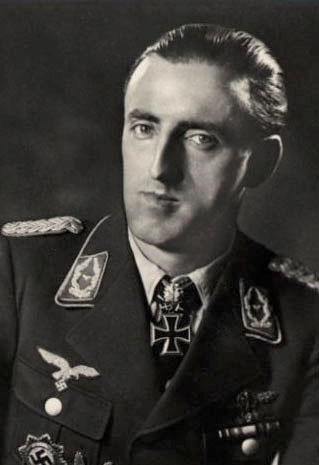
Hermann Graf was born in 1912 in Engen, near Swiss border. A pre-war football player and glider pilot, Graf joined the Luftwaffe in 1935. He was initially selected for transport aviation and was posted to Jagdgeschwader 51 (JG 51) in May 1939. At the outbreak of war, he was stationed on the German–Franco border flying uneventful patrols.
Serving as a flight instructor, he was stationed in Romania as part of a German military mission training Romanian pilots. Graf flew a few ground support missions in the closing days of the German invasion of Crete. Following the start of Operation Barbarossa, Graf claimed his first aerial victory on 4 August 1941. He was awarded the Knight’s Cross of the Iron Cross after 45 Eastern Front victories in January 1942.
By 16 September 1942, his number of victories had increased to 172 for which he was honored with the Knight’s Cross of the Iron Cross with Oak Leaves, Swords, and Diamonds. On 26 September 1942, he became the first fighter pilot in aviation history to claim 200 enemy aircraft shot down. By then a national hero, Graf was taken off combat operations and posted to a fighter pilot training school in France before being tasked with the leadership of a high-flying de Havilland Mosquito intercept unit JG 50.
In November 1943, Graf returned to combat operations. He was appointed Wing Commander of JG 11 and claimed his last aerial victory on 29 March 1944. He was severely injured during this encounter and, after a period of convalescence, became Wing Commander of JG 52. He and the remainder of JG 52 surrendered to units of the United States Army on 8 May 1945. He claimed 212 aerial victories in over 830 combat missions.
10. Heinrich Ehrler
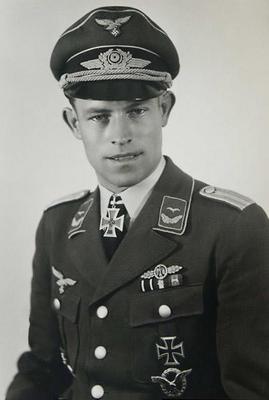
Heinrich Ehrler was born on 14 September 1917. He grew up in the Weimar Republic and Third Reich as one of 12 children. Following a vocational education as a butcher, Ehrler joined the military service of the Wehrmacht in October 1935. He initially served with the artillery and anti-aircraft artillery. He participated in the Spanish Civil War and following the outbreak of World War II requested a transfer to the Luftwaffe.
He scored his first victory in May 1940 in Norway, as part of JG 77, later restructured as JG 5. On 4 September 1942, he was awarded the Knight’s Cross of the Iron Cross for 64 aerial victories. By June the following year, his tally rose to a hundred. On 25 May 1944, he achieved nine victories in one day, bringing his tally up to 155. On 1 August, he was appointed to Wing Commander of JG 5 and at the same time was promoted to Major.
Scapegoated for the loss of the German battleship Tirpitz, Ehrler – who had been nominated for the Knight’s Cross of the Iron Cross with Oak Leaves and Swords prior to the disaster – was court-martialled, stripped of his command and sentenced to three years and two months of honorable imprisonment. Following further proof of his innocence, Ehrler’s sentence was commuted and his loss of rank rescinded, and in February 1945 he was transferred to JG 7.
According to his fellow pilots, Ehrler thereafter flew in the increasingly desperate air battles without the purpose and dedication that had made him one of the Luftwaffe’s most successful aces. On 4 April 1945, he shot down two Allied bombers for his final two victories, before destroying a third by ramming with his damaged aircraft after having run out of ammunition. In his last transmission over the Squadron Radio Network Ehrler said: ‘Theo, I have run out of ammunition. I’m going to ram this one. Goodbye. We’ll see each other in Valhalla.’
Heinrich Ehrler is credited with 208 enemy aircraft shot down in over 400 combat missions.
